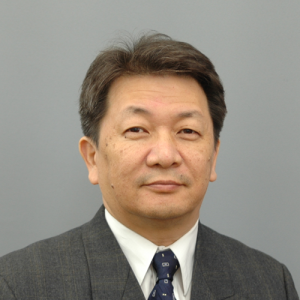A01-1

Investigation of Response and Communication zones on the Golgi and mitochondria
Research abstract
Recent advances in analysis techniques have identified a variety of novel mitochondrial functions, and high-quality imaging techniques have lead to the identification of the specific regions responsible for each function. These findings showed that many of the functions occur at limited regions (zones) within mitochondria, rather than throughout mitochondria, and there are several types of zones, including zones required for apoptosis, necrosis, mitophagy, innate immunity, etc. Mitochondrial function is also carried out through membrane contact with other organelles. Contact sites that enable the exchange of various molecules between different organelles are generated at the local regions of the outer membrane, and hence they are referred to as “communication zones”. The most famous communication zone is the MAM, which is the ER membrane associated with the mitochondrial outer membrane
In this study, we will identify molecules required for these organelle zones, elucidate the molecular mechanisms of zone formation, analyze these organelle zones spaciotemporally, and investigate their biological roles. We will focus on mitochondrial “response zone” for apoptosis, necrosis, and mitophagy, and Golgi “response zone” during Golgi stress. We will also analyze the communication zone between mitochondria and the Golgi. Furthermore, we will elucidate the organic linkage between each organelle zone that regulates various cellular events, and investigate diseases that occur due to defects in these organelle zones.
Original papers
- Yamaguchi, T., Suzuki, T., Sato, T., Takahashi, A., Watanabe, H., Kadowaki, A., Natsui, M., Inagaki, H., Arakawa, S., Nakaoka, S., Koizumi, Y., Seki, S., Adachi, S., Fukao, A., Fujiwara, T., Natsume, T., Kimura, A., Komatsu, M., Shimizu, S., Ito, H., Suzuki, Y., Penninger, J. M., Yamamoto, T., Ima Y. and Kuba, K. (2018) The CCR4-NOT deadenylase complex controls Atg7-dependent cell death and heart function. Scientific Signaling, 6, 11(516).
- Iwashita, H., Tajima Sakurai, H., Nagahora, N., Ishiyama, M., Shioji, K., Sasamoto, K., Okuma, K., Shimizu, S. and Ueno, Y. (2018) Small Fluorescent molecules for monitoring autophagic flux. FEBS Lett. 592, 559-567.
- Nagata, M., Arakawa, S., Yamaguchi, H., Torii, S., Endo, H., Tsujioka, M., Honda, S., Nishida, Y., Konishi, A. and Shimizu, S. (2018) Dram1 regulates DNA damage-induced alternative autophag Cell Stress 2, 55-65.
- Shimizu, S. (2018) Biological Roles of Alternative Autophagy. Mol Cells, 41, 50-54.
- Fujikake, N., Shin, M. and Shimizu, S. (2018) Association between autophagy and neurodegenerative diseases. Frontiers in Neuroscience, in press
- Arakawa, S., Tsujioka, M., Yoshida, T., Tajima-Sakurai, H., Nishida, Y., Matsuoka, Y., Yoshino, I., Tsujimoto, Y. and Shimizu, S. (2017) Role of Atg5-dependent cell death in the embryonic development of Bax/Bak double-knockout mice. Cell Death Differ., 24,1598-1608.
- Asano, J., Sato, T., Ichinose, S., Kajita, M., Onai, N., Shimizu, S. and Ohteki, T., (2017) Intrinsic autophagy is required for the maintenance of intestinal stem cells and for irradiation-induced intestinal regeneration. Cell Rep., 20, 1050–1060.
- Hidefumi, I., Satoru, T., Noriyoshi, N., Munetaka, I., Kosei, S., Kazumi, S., Shimizu, S. and Kentaro. O., (2017) Live Cell Imaging of Mitochondrial Autophagy with a Novel Fluorescent Small Molecule. ACS Chemical Biology, 12, 2546-2551.
- Kanemoto, K., Sugimura, Y., Shimizu, S., Yoshida, S., and Hosoya, T. (2017) Rhodium-catalyzed odorless synthesis of diaryl sulfides from borylarenes and S-aryl thiosulfonates. Commun., 53, 10640–10643.
- Yotsumoto, S., Muroi, Y., Chiba, T., Ohmura, R., Yoneyama, M., Magarisawa, M., Dodo, K., Terayama, N., Sodeoka, M., Aoyagi, R., Arita, M., Arakawa, S., Shimizu, S. and Tanaka, M. (2017) Hyperoxidation of ether-linked phospholipids accelerates neutrophil extracellular trap formation. Rep., 7, 16026
- Watanabe, Y., Honda, S., Konishi, A., Arakawa, S., Murohashi, M., Yamaguchi, H., Torii, S., Tanabe, M., Tanaka, S., Warabi, E., and Shimizu, S. (2016) Autophagy controls centrosome number by degrading Cep63. Nature Commun. 7:13508
- Yamaguchi, H., Arakawa, S., Kanaseki, T., Miyatsuka, T., Fujitani, Y., Watada, H., Tsujimoto, Y., and Shimizu, S. (2016) Golgi membrane-associated degradation pathway in yeast and mammals. EMBO J. 35:1991-2007
- Honda, S., Arakawa, S., Nishida, Y., Yamaguchi, H., Ishii, E., and Shimizu, S. (2014) Ulk1-mediated Atg5-independent macroautophagy mediates elimination of mitochondria from embryonic reticulocytes. Nature Commun. 5, Article number:4004
- Narita, M., Young, A.R.J., Arakawa, S., Samarajiwa, S.A., Nakashima, T., Yoshida, S., Hong, S.K., Berry, L.S., Reichelt, S., Ferreira, M., Tavaré, S., Inoki, K., Shimizu, S., and Narita, M. (2011) Spatial coupling of mTOR and autophagy augments secretory phenotypes. Science 332, 966-970
- Nishida, Y., Arakawa, S., Fujitani, K., Yamaguchi, H., Mizuta, T., Kanaseki, T., Komatsu, M., Otsu, K., Tsujimoto, Y., and Shimizu, S. (2009) Discovery of Atg5/Atg7-independent alternative macroautophagy. Nature 461, 654-658, 2009
- Nakagawa, T., Shimizu, S., Watanabe, T., Yamaguchi, O., Otsu, K., Yamagata, H., Inohara, H., Kubo, T., and Tsujimoto, Y. (2005) Cyclophilin D-dependent mitochondrial permeability transition regulates some necrotic but not apoptotic cell death. Nature 434, 652-658
- Shimizu, S., Kanaseki, T., Mizushima, N., Mizuta, T., Arakawa-Kobayashi, S., Thompson, C.B., and Tsujimoto, Y. (2004) Role of Bcl-2 family proteins in a non-apoptotic programmed cell death dependent on autophagy genes. Nature Cell Biol. 6, 1221-1228
- Konishi, A*., Shimizu, S*., Hirota, J., Takao, T., Fan, Y., Matsuoka, Y., Zhang, L., Yoneda, Y., Fujii, Y., Skoultchi, A.I., and Tsujimoto, Y. (2003) Involvement of histone H1.2 in apoptosis induced by DNA double-strand breaks. Cell 114, 673-688 (* equally contributed)
- Shimizu, S., Narita, M., and Tsujimoto, Y. (1999) Bcl-2 family proteins regulate the release of apoptogenic cytochrome c by the mitochondrial channel VDAC. Nature 399, 483-487
- Shimizu, S., Eguchi, Y., Kosaka, H., Kamiike, W., Matsuda, H., and Tsujimoto, Y. (1995) Prevention of hypoxia-induced cell death by Bcl-2 and Bcl-xL. Nature 374, 811-813
Reviews
- Shimizu, S. (2019) Organelle zones in mitochondria. J Biochem. 165, 101–107.
- Arakawa, S., Honda, S., Yamaguchi, H., and Shimizu, S. (2017) Molecular mechanisms and physiological roles of Atg5/Atg7-independent alternative autophagy. Proceedings of the Japan Academy, Series B. in press
- Shimizu, S., Honda, S., Arakawa, S., and Yamaguchi, H. (2014) Alternative Macroautophagy and Mitophagy. Int. J. Biochem. Cell Biol. 50, 64-6
- Shimizu, S., Yoshida, T., Tsujioka, M., and Arakawa, S. (2014) Autophagic Cell Death and Cancer. Int. J. Mol. Sci. 15, 3145-53
- Shimizu, S., Arakawa, S., Nishida, Y., Yamaguchi, H., and Yoshida, T. (2013) Mammalian Autophagy Can Occur Through an Atg5/Atg7-Independent Pathway. AUTOPHAGY: Cancer, Other Pathologies, Inflammation, Immunity, and Infection.Vol. 2 (Edit MA Hayat) Academic Press, 49-59
- Shimizu, S., Arakawa, S., Nishida, Y. (2010) Autophagy takes an alternative pathway. Autophagy 6.2, 290-291


